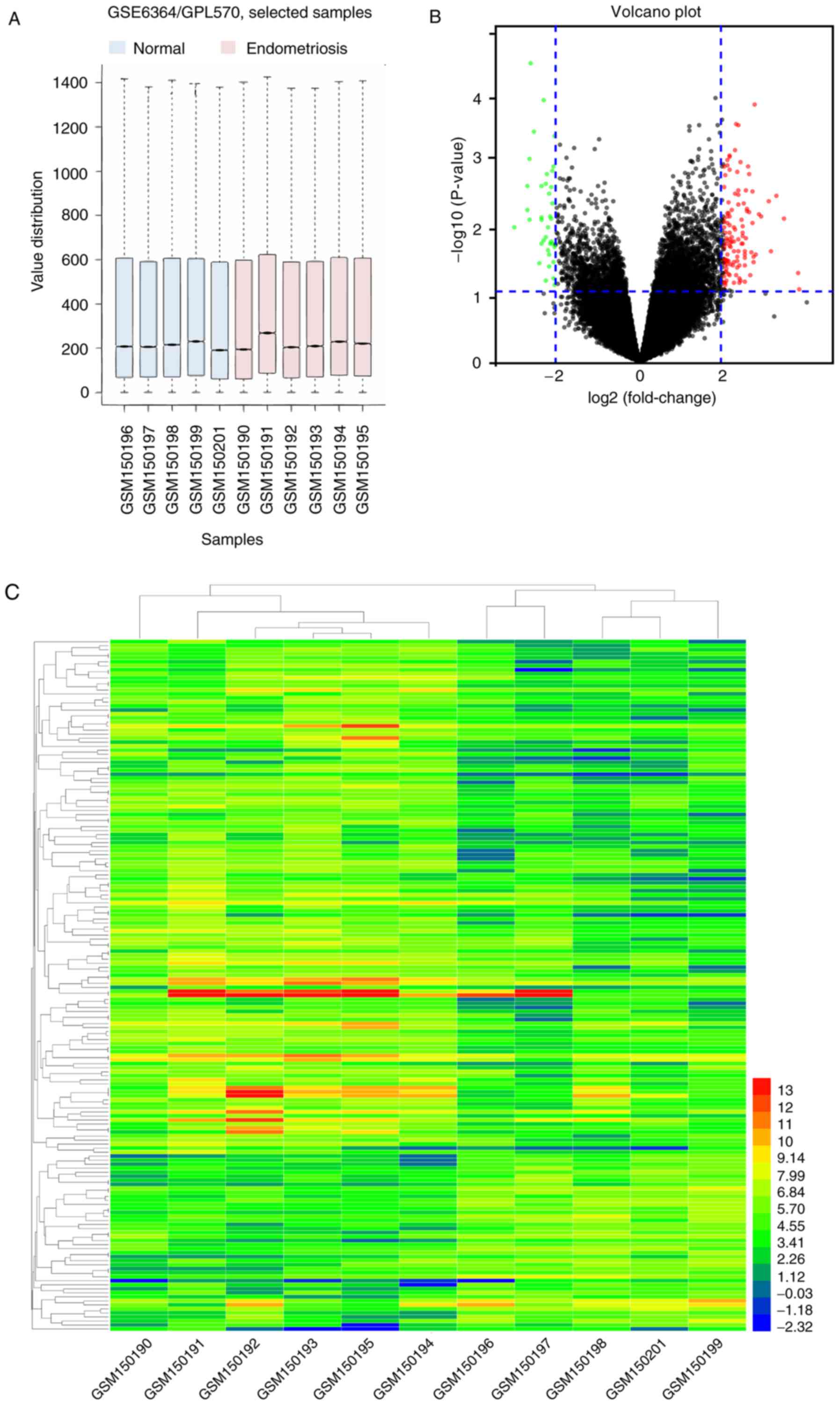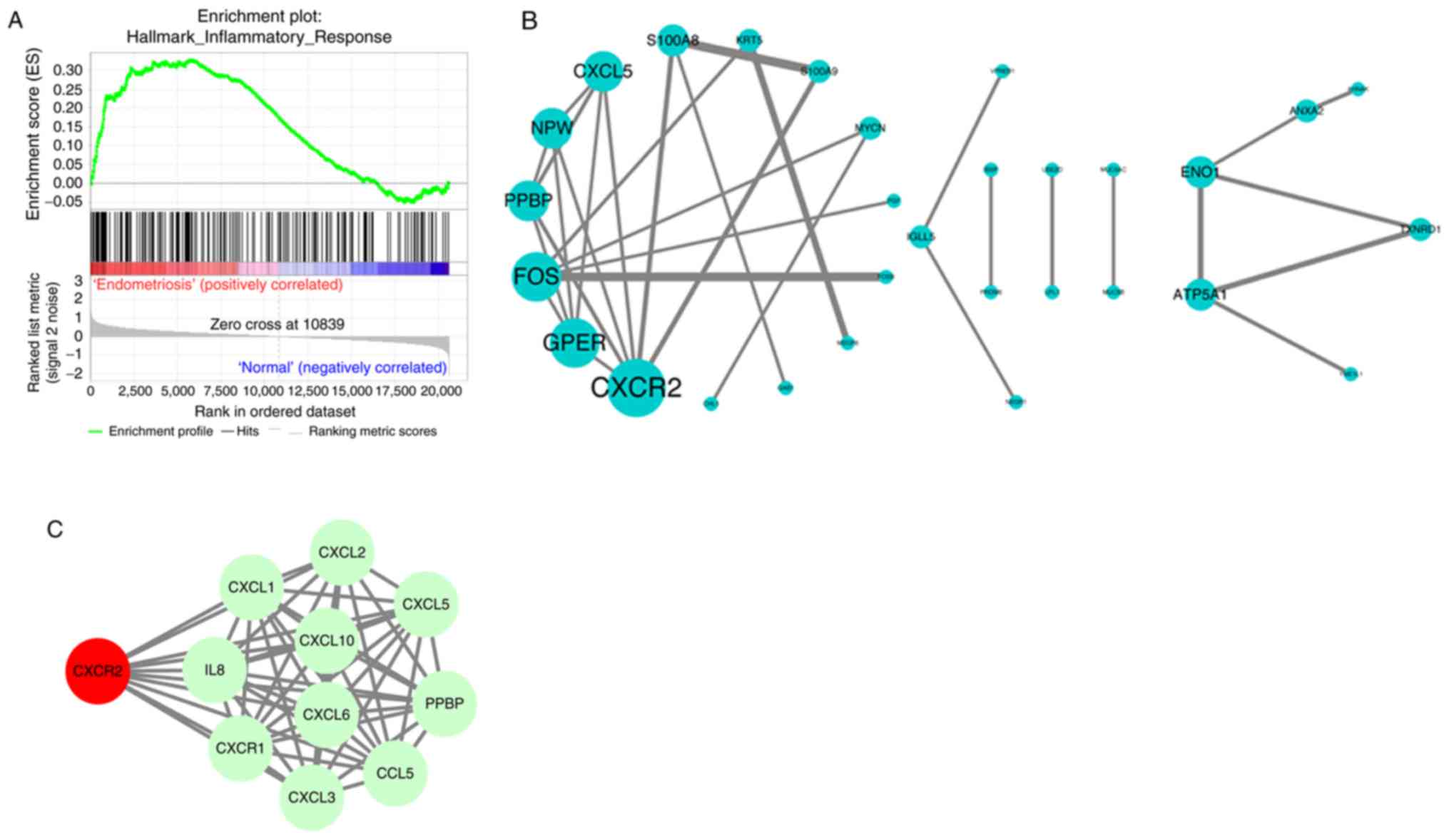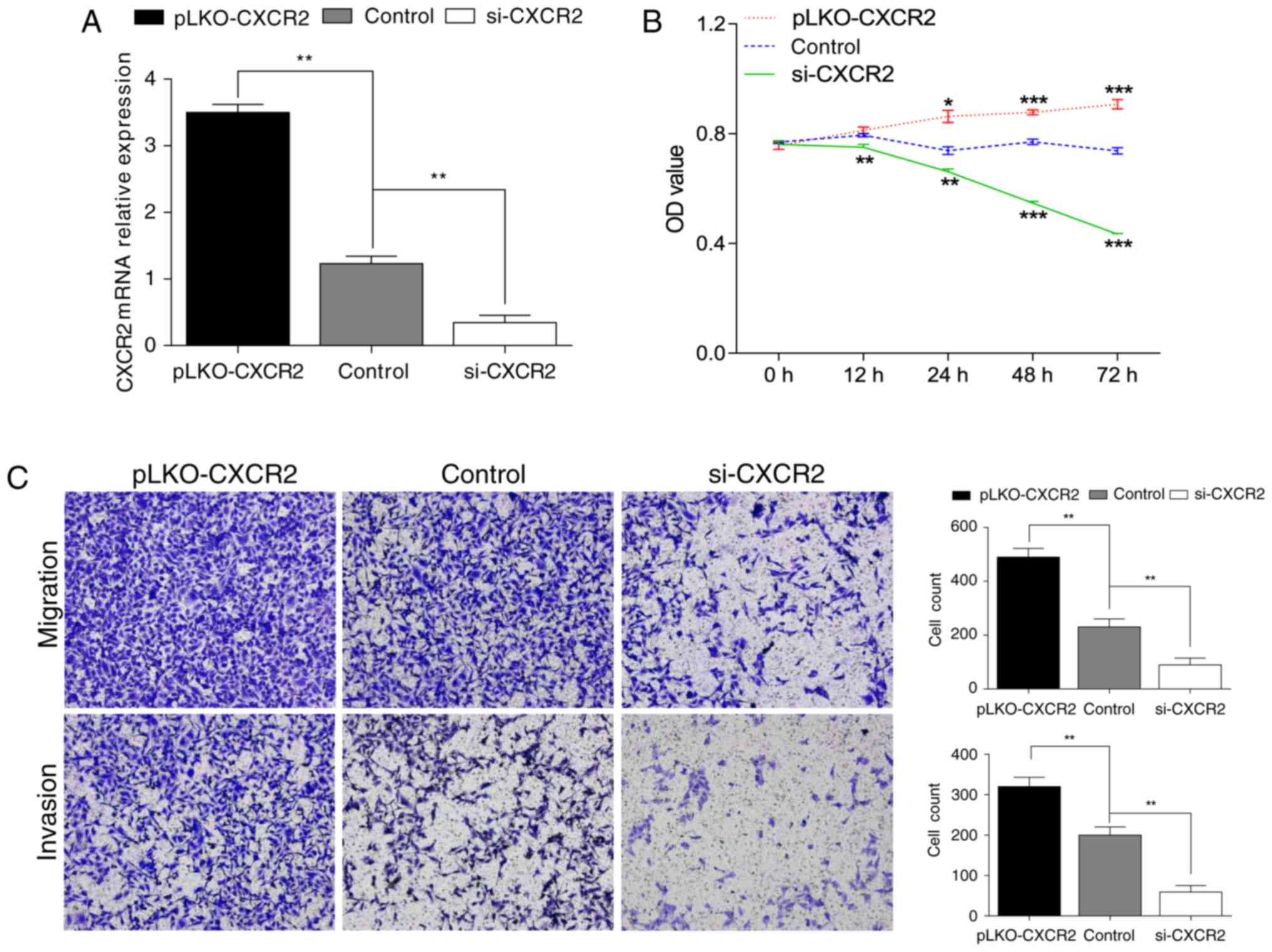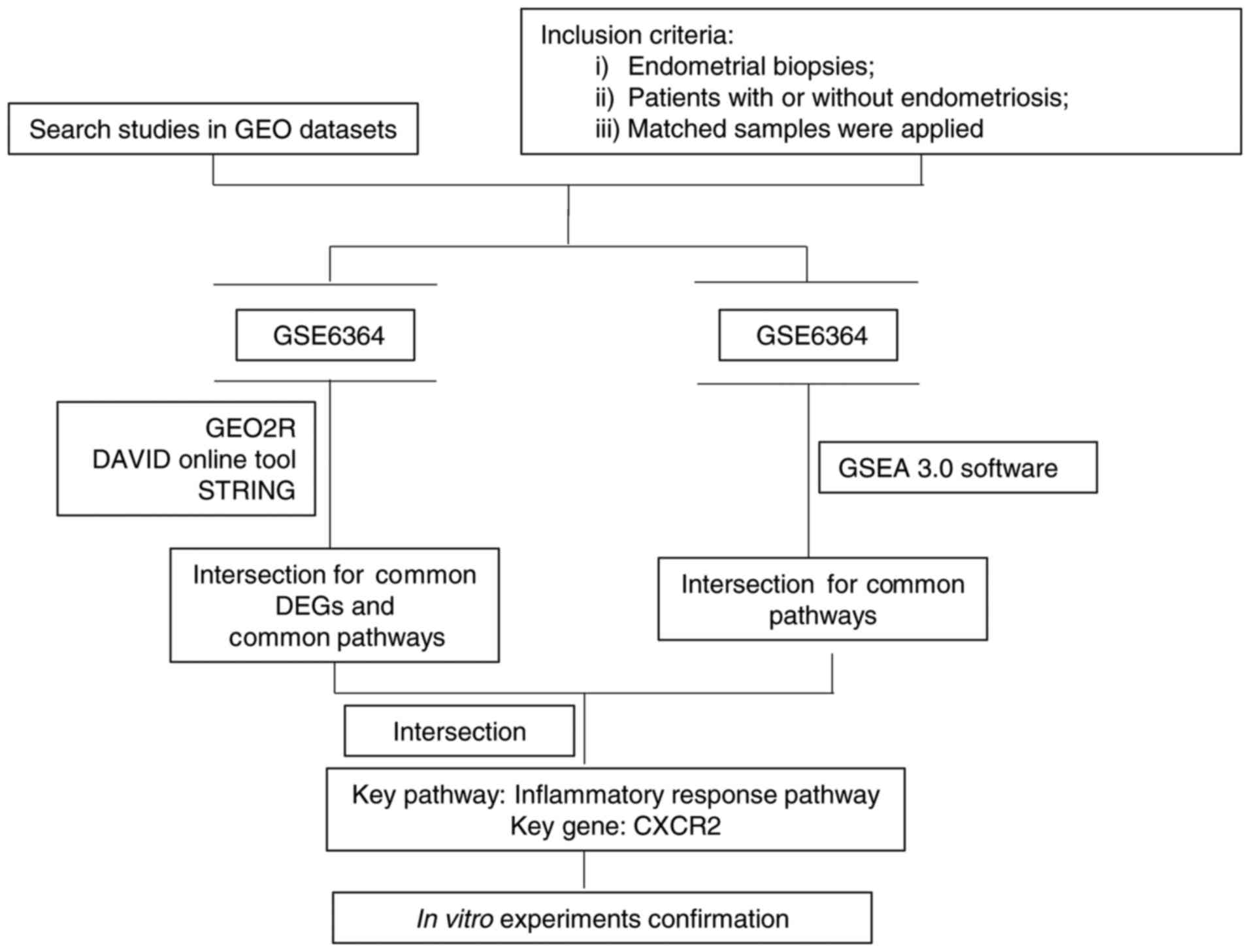|
1
|
Eskenazi B and Warner ML: Epidemiology of
endometriosis. Obstet Gynecol Clin North Am. 24:235–258. 1997.
View Article : Google Scholar : PubMed/NCBI
|
|
2
|
Vetvicka V, Lagana AS, Salmeri FM, Triolo
O, Palmara VI, Vitale SG, Sofo V and Králíčková M: Regulation of
apoptotic pathways during endometriosis: From the molecular basis
to the future perspectives. Arch Gynecol Obstet. 294:897–904. 2016.
View Article : Google Scholar : PubMed/NCBI
|
|
3
|
Laganà AS, Vitale SG, Salmeri FM, Triolo
O, Frangež Ban H, Vrtačnik-Bokal E, Stojanovska L, Apostolopoulos
V, Granese R and Sofo V: Unus pro omnibus, omnes pro uno: A novel,
evidence-based, unifying theory for the pathogenesis of
endometriosis. Med Hypotheses. 103:10–20. 2017. View Article : Google Scholar : PubMed/NCBI
|
|
4
|
Louis Buck GM, Hediger ML, Peterson CM,
Croughan M, Sundaram R, Stanford J, Chen Z, Fujimoto VY, Varner MW,
Trumble A, et al: Incidence of endometriosis by study population
and diagnostic method: The ENDO study. Fertil Steril. 96:360–365.
2011. View Article : Google Scholar : PubMed/NCBI
|
|
5
|
Sourial S, Tempest N and Hapangama DK:
Theories on the pathogenesis of endometriosis. Int J Reprod Med.
2014:1795152014. View Article : Google Scholar : PubMed/NCBI
|
|
6
|
Laganà AS, Salmeri FM, Vitale SG, Triolo O
and Götte M: Stem cell trafficking during endometriosis: May
epigenetics play a pivotal role? Reprod Sci. 25:978–979. 2018.
View Article : Google Scholar : PubMed/NCBI
|
|
7
|
Gupta S, Agarwal A, Krajcir N and Alvarez
JG: Role of oxidative stress in endometriosis. Reprod Biomed
Online. 13:126–134. 2006. View Article : Google Scholar : PubMed/NCBI
|
|
8
|
Gazvani R and Templeton A: Peritoneal
environment, cytokines and angiogenesis in the pathophysiology of
endometriosis. Reproduction. 123:217–226. 2002. View Article : Google Scholar : PubMed/NCBI
|
|
9
|
Van Langendonckt A, Casanas-Roux F and
Donnez J: Oxidative stress and peritoneal endometriosis. Fertil
Steril. 77:861–870. 2002. View Article : Google Scholar : PubMed/NCBI
|
|
10
|
Arablou T and Kolahdouz-Mohammadi R:
Curcumin and endometriosis: Review on potential roles and molecular
mechanisms. Biomed Pharmacother. 97:91–97. 2018. View Article : Google Scholar : PubMed/NCBI
|
|
11
|
Mohammadi Kolahdouz R and Arablou T:
Resveratrol and endometriosis: In vitro and animal studies and
underlying mechanisms (Review). Biomed Pharmacother. 91:220–228.
2017. View Article : Google Scholar : PubMed/NCBI
|
|
12
|
Laganà AS, La Rosa VL, Rapisarda AMC,
Valenti G, Sapia F, Chiofalo B, Rossetti D, Frangež Ban H, Bokal
Vrtačnik E and Vitale SG: Anxiety and depression in patients with
endometriosis: Impact and management challenges. Int J Womens
Health. 9:323–330. 2017. View Article : Google Scholar : PubMed/NCBI
|
|
13
|
Laganà AS, La Rosa V, Petrosino B and
Vitale SG: Comment on ‘Risk of developing major depression and
anxiety disorders among women with endometriosis: A longitudinal
follow-up study’. J Affect Disord. 208:672–673. 2017. View Article : Google Scholar : PubMed/NCBI
|
|
14
|
Laganà AS, Vitale SG, Granese R, Palmara
V, Frangež Ban H, Vrtačnik-Bokal E, Chiofalo B and Triolo O:
Clinical dynamics of Dienogest for the treatment of endometriosis:
From bench to bedside. Expert Opin Drug Metab Toxicol. 13:593–596.
2017. View Article : Google Scholar : PubMed/NCBI
|
|
15
|
Simoens S, Dunselman G, Dirksen C,
Hummelshoj L, Bokor A, Brandes I, Brodszky V, Canis M, Colombo GL,
DeLeire T, et al: The burden of endometriosis: Costs and quality of
life of women with endometriosis and treated in referral centres.
Hum Reprod. 27:1292–1299. 2012. View Article : Google Scholar : PubMed/NCBI
|
|
16
|
Luo Y, Wu Y, Peng Y, Liu X, Bie J and Li
S: Systematic analysis to identify a key role of CDK1 in mediating
gene interaction networks in cervical cancer development. Ir J Med
Sci. 185:231–239. 2016. View Article : Google Scholar : PubMed/NCBI
|
|
17
|
Fang C, Huang Y, Pei Y, Zhang HH, Chen X,
Guo H, Li S, Ji X and Hu J: Genome-wide gene expression profiling
reveals that CD274 is up-regulated new-onset type 1 diabetes
mellitus. Acta Diabetol. 54:757–767. 2017. View Article : Google Scholar : PubMed/NCBI
|
|
18
|
Benagiano G, Brosens I and Lippi D: The
history of endometriosis. Gynecol Obstet Invest. 78:1–9. 2014.
View Article : Google Scholar : PubMed/NCBI
|
|
19
|
Burney RO, Talbi S, Hamilton AE, Vo KC,
Nyegaard M, Nezhat CR, Lessey BA and Giudice LC: Gene expression
analysis of endometrium reveals progesterone resistance and
candidate susceptibility genes in women with endometriosis.
Endocrinology. 148:3814–3826. 2007. View Article : Google Scholar : PubMed/NCBI
|
|
20
|
Sean D and Meltzer PS: GEOquery: A bridge
between the gene expression omnibus (GEO) and BioConductor.
Bioinformatics. 23:1846–1847. 2007. View Article : Google Scholar : PubMed/NCBI
|
|
21
|
Deng W, Wang Y, Liu Z, Cheng H and Xue Y:
HemI: A toolkit for illustrating heatmaps. PLoS One. 9:e1119882014.
View Article : Google Scholar : PubMed/NCBI
|
|
22
|
Ashburner M, Ball CA, Blake JA, Botstein
D, Butler H, Cherry JM, Davis AP, Dolinski K, Dwight SS, Eppig JT,
et al: Gene ontology: Tool for the unification of biology. The gene
ontology consortium. Nat Genet. 25:25–29. 2000. View Article : Google Scholar : PubMed/NCBI
|
|
23
|
Dennis G Jr, Sherman BT, Hosack DA, Yang
J, Gao W, Lane HC and Lempicki RA: DAVID: Database for annotation,
visualization, and integrated discovery. Genome Biol. 4:P32003.
View Article : Google Scholar : PubMed/NCBI
|
|
24
|
Subramanian A, Tamayo P, Mootha VK,
Mukherjee S, Ebert BL, Gillette MA, Paulovich A, Pomeroy SL, Golub
TR, Lander ES and Mesirov JP: Gene set enrichment analysis: A
knowledge-based approach for interpreting genome-wide expression
profiles. Proc Natl Acad Sci USA. 102:15545–15550. 2005. View Article : Google Scholar : PubMed/NCBI
|
|
25
|
Mootha VK, Lindgren CM, Eriksson KF,
Subramanian A, Sihag S, Lehar J, Puigserver P, Carlsson E,
Ridderstråle M, Laurila E, et al: PGC-1alpha-responsive genes
involved in oxidative phosphorylation are coordinately
downregulated in human diabetes. Nat Genet. 34:267–273. 2003.
View Article : Google Scholar : PubMed/NCBI
|
|
26
|
Szklarczyk D, Franceschini A, Kuhn M,
Simonovic M, Roth A, Minguez P, Doerks T, Stark M, Muller J, Bork
P, et al: The STRING database in 2011: Functional interaction
networks of proteins, globally integrated and scored. Nucleic Acids
Res. 39:(Database Issue). D561–D568. 2011. View Article : Google Scholar : PubMed/NCBI
|
|
27
|
Smoot ME, Ono K, Ruscheinski J, Wang PL
and Ideker T: Cytoscape 2.8: New features for data integration and
network visualization. Bioinformatics. 27:431–432. 2011. View Article : Google Scholar : PubMed/NCBI
|
|
28
|
Cho S, Mutlu L, Zhou Y and Taylor HS:
Aromatase inhibitor regulates let-7 expression and let-7f-induced
cell migration in endometrial cells from women with endometriosis.
Fertil Steril. 106:673–680. 2016. View Article : Google Scholar : PubMed/NCBI
|
|
29
|
Di Stefano V, Wang B, Parobchak N, Roche N
and Rosen T: RelB/p52-mediated NF-κB signaling alters histone
acetylation to increase the abundance of corticotropin-releasing
hormone in human placenta. Sci Signal. 8:ra852015. View Article : Google Scholar : PubMed/NCBI
|
|
30
|
Livak KJ and Schmittgen TD: Analysis of
relative gene expression data using real-time quantitative PCR and
the 2(-Delta Delta C(T)) method. Methods. 25:402–408. 2001.
View Article : Google Scholar : PubMed/NCBI
|
|
31
|
Simoens S, Hummelshoj L and D'Hooghe T:
Endometriosis: Cost estimates and methodological perspective. Hum
Reprod Update. 13:395–404. 2007. View Article : Google Scholar : PubMed/NCBI
|
|
32
|
Mu F, Harris HR, Rich-Edwards JW,
Hankinson SE, Rimm EB, Spiegelman D and Missmer SA: A prospective
study of inflammatory markers and risk of endometriosis. Am J
Epidemiol. 187:515–522. 2018. View Article : Google Scholar : PubMed/NCBI
|
|
33
|
Bulun SE: Endometriosis. N Engl J Med.
360:268–279. 2009. View Article : Google Scholar : PubMed/NCBI
|
|
34
|
Allen C, Hopewell S and Prentice A:
Non-steroidal anti-inflammatory drugs for pain in women with
endometriosis. Cochrane Database Syst Rev: CD004753. 2005.
View Article : Google Scholar
|
|
35
|
Burney RO and Giudice LC: Pathogenesis and
pathophysiology of endometriosis. Fertil Steril. 98:511–519. 2012.
View Article : Google Scholar : PubMed/NCBI
|
|
36
|
Ulukus M, Ulukus EC, Seval Y, Zheng W and
Arici A: Expression of interleukin-8 receptors in endometriosis.
Hum Reprod. 20:794–801. 2005. View Article : Google Scholar : PubMed/NCBI
|
|
37
|
Nishida M, Nasu K and Narahara H: Role of
chemokines in the pathogenesis of endometriosis. Front Biosci
(Schol Ed). 3:1196–1204. 2011. View
Article : Google Scholar : PubMed/NCBI
|
|
38
|
Arici A, Seli E, Zeyneloglu HB, Senturk
LM, Oral E and Olive DL: Interleukin-8 induces proliferation of
endometrial stromal cells: A potential autocrine growth factor. J
Clin Endocrinol Metab. 83:1201–1205. 1998. View Article : Google Scholar : PubMed/NCBI
|
|
39
|
Garcia-Velasco JA and Arici A:
Interleukin-8 expression in endometrial stromal cells is regulated
by integrin-dependent cell adhesion. Mol Hum Reprod. 5:1135–1140.
1999. View Article : Google Scholar : PubMed/NCBI
|
|
40
|
Iwabe T, Harada T, Tsudo T, Tanikawa M,
Onohara Y and Terakawa N: Pathogenetic significance of increased
levels of interleukin-8 in the peritoneal fluid of patients with
endometriosis. Fertil Steril. 69:924–930. 1998. View Article : Google Scholar : PubMed/NCBI
|
|
41
|
Premack BA and Schall TJ: Chemokine
receptors: Gateways to inflammation and infection. Nat Med.
2:1174–1178. 1996. View Article : Google Scholar : PubMed/NCBI
|
|
42
|
Ulukus M, Ulukus EC, Seval Y, Cinar O,
Zheng W and Arici A: Expression of interleukin-8 receptors in
patients with adenomyosis. Fertil Steril. 85:714–720. 2006.
View Article : Google Scholar : PubMed/NCBI
|
|
43
|
Antiñolo G, Fernández RM, Noval JA, Molini
JL and Borrego S: Analysis of the involvement of CCR5-Delta32 and
CCR2-V64I variants in the development of endometriosis. Mol Hum
Reprod. 10:155–157. 2004. View Article : Google Scholar : PubMed/NCBI
|
|
44
|
Wieser F, Dogan S, Klingel K, Diedrich K,
Taylor RN and Hornung D: Expression and regulation of CCR1 in
peritoneal macrophages from women with and without endometriosis.
Fertil Steril. 83:1878–1881. 2005. View Article : Google Scholar : PubMed/NCBI
|
|
45
|
Chapron C, Borghese B, Streuli I and de
Ziegler D: Markers of adult endometriosis detectable in
adolescence. J Pediatr Adolesc Gynecol. 24 5 Suppl:S7–S12. 2011.
View Article : Google Scholar : PubMed/NCBI
|


















